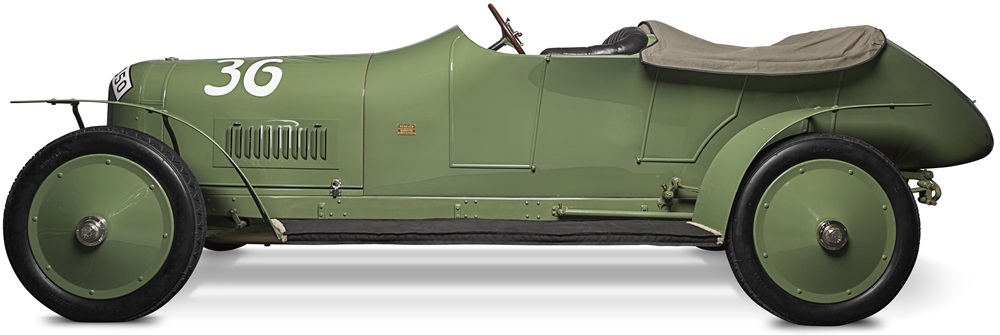1910 Prince Heinrich Two Seat Race Car

The descriptions of the Classic Cars in the Directory were partly generated or supplemented with the help of artificial intelligence (AI). The content may occasionally not always be entirely accurate or factually correct despite careful checking.
The Benz Prince Heinrich Two Seat Race car of 1910 was a marvel of engineering, designed for speed and adrenaline-pumping driving experiences. This vehicle was manufactured to compete in the renowned Prince Heinrich (Prinz-Heinrich) Tour, a challenging auto race that spanned 1,200 kilometers across Germany.
The Benz Prince Heinrich Two Seat Race car's most prominent feature was its powerful four-cylinder, T-head engine that had a capacity of 5.7 liters. This engine had a maximum output of 80 horsepower, capable of propelling the car to a top speed of 80 miles per hour, which was an astounding feat in 1910. The engine was coupled with a four-speed manual transmission system that allowed for precise gear changes and quick acceleration when needed. Additionally, the car's exhaust system featured a smooth and efficient design that helped optimize the engine's performance.
To support the car's impressive engine capabilities, it was constructed with a lightweight steel frame that ensured stability while driving at high speeds. The car's front suspension featured a rigid axle with semi-elliptic springs, while the rear suspension had an innovative cantilever design that allowed for greater stability during tight turns.
The Benz Prince Heinrich race car was also equipped with advanced braking systems for optimal stopping power. It had hand-operated external contracting brakes on the rear wheels, combined with internal expanding brakes on the front wheels, which were controlled by a foot pedal to provide exceptional precision and stopping ability.
The two-seat design of the Benz Prince Heinrich race car ensured that it could accommodate both the driver and the passenger comfortably. The car had a removable hood and a sleek, aerodynamic body to minimize air resistance and enhance the car's performance. The car's elegant design incorporated a beautiful black-and-gold color scheme with a polished and lacquered finish.
In conclusion, the Benz Prince Heinrich Two Seat Race car of 1910 was an exceptional example of automotive engineering excellence. Its powerful engine, efficient exhaust system, sturdy frame, advanced brakes, and aerodynamic design made it a formidable contender in the 1910 Prince Heinrich Tour. This car represented the automotive advancements of the time and set the stage for future iconic vehicles in the racing industry.
Milestones
- Developed by Benz & Cie in 1910 for the Prince Heinrich Tour, a 1,200-mile race through Germany - Featured a powerful 85 horsepower engine, and lightweight construction for optimal speed - Utilized a tubular steel chassis and aluminum body construction, cementing its status as a race car - Set a new top speed record of 85 miles per hour during testing, solidifying its position as a serious contender - Equipped with a range of cutting-edge features, such as four-wheel brakes, dual carburetors, and a 4-speed transmission for improved handling and control - Completed the Prince Heinrich Tour race, placing second overall with driver Fritz Erle at the helm - Contributed to the evolution of automotive engineering and design, paving the way for future race car innovations.Technical
- Manufacturer: Benz & Cie. - Model: Prince Heinrich Two Seat Race Car - Year of manufacture: 1910 - Engine: 5.7-liter 4-cylinder - Maximum power output: 80 horsepower - Top speed: 100 mph (160 km/h) - Transmission: 4-speed manual - Suspension: Rigid front axle and rear live axle with semi-elliptical leaf springs - Brakes: 4-wheel drum brakes - Steering: Worm and roller - Chassis: Steel tubing, ladder frame - Body: Open two-seater with aluminum body panels - Wheelbase: 98 inches (2,489 mm) - Weight: 1,430 lb (650 kg) - Racing history: Named after Prince Heinrich of Prussia, the car participated in the 1910 Prince Heinrich Touring Car Trial and won its class, as well as placing 4th overall. The following year it competed in the American Grand Prize and won in its class.SUPERMIND TRIVIA